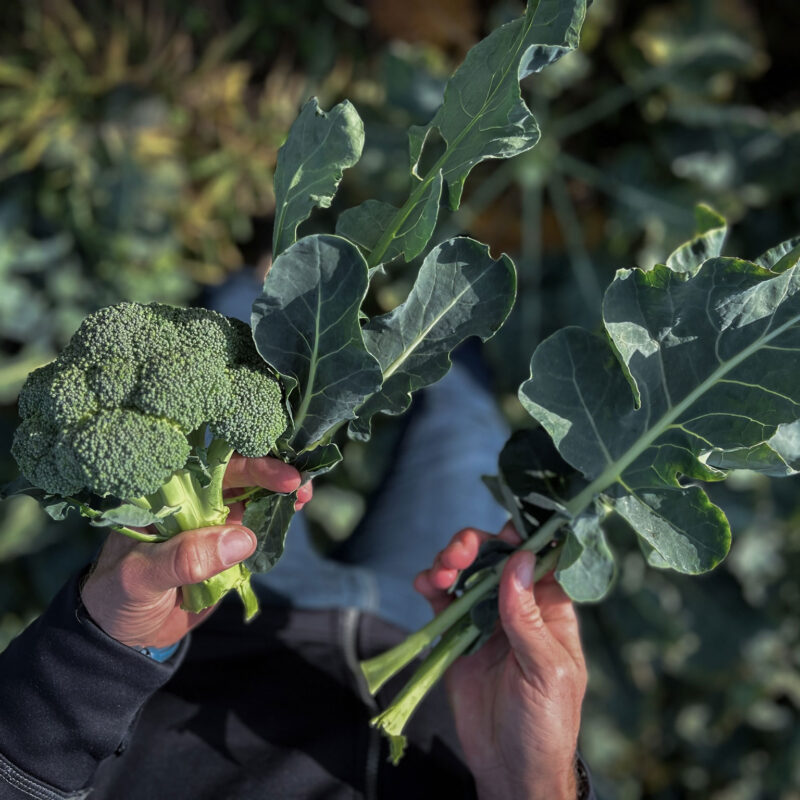Sustainable Agricultural Practices – Do They Lead to Better Soil Health and Carbon Sequestration?
At Torsåker Farm, Axfoundation convenes researchers and farmers to examine techniques and cultivation methods that promote improved soil health and carbon sequestration in agricultural land. More carbon in the soil not only reduces atmospheric carbon dioxide but also fosters healthier soil, resilient against the impacts of climate changes such as droughts and floods. Axfoundation aims to raise awareness and interest among Swedish farmers, advisors, and agricultural machinery manufacturers in sustainable practices, whether labeled as regenerative farming, conservation agriculture, or agroecological methods.

Together with researchers and farmers, Axfoundation is evaluating technologies and cultivation methods that contribute to improving soil health and sequestering carbon in arable land.
The Issue
Topsoil forms the foundation of our food production, yet it is currently being depleted, contaminated, and eroded in many parts of the world. This leads to a long-term decline in production capacity and reduced yields on lower-quality soils. Additionally, agriculture is a significant source of greenhouse gas emissions. According to estimates from the Intergovernmental Panel on Climate Change (IPCC), approximately 23% of global greenhouse gas emissions originate from forestry and agriculture. These emissions include methane from livestock, greenhouse gases released from manure and soil liming, carbon dioxide from agricultural machinery and transport, as well as nitrous oxide and carbon dioxide released from cropland and organic soils.
Our Solution
To address the climate and environmental issues associated with current agricultural systems, an increasing number of researchers emphasize the need to adopt sustainable cultivation methods. This may involve minimal soil disturbance by the farmer, maintaining fields green for a significant part of the year to sequester carbon in the soil, practicing no-till farming, implementing diverse crop rotations, minimizing the use of pesticides, and maximizing biodiversity.
To determine which methods actually yield the desired results, various techniques need to be tested in practice, evaluated, and adapted to the local conditions on each individual farm.

In Torsåker Farm's fields, Axfoundation has established test plots with four different cropping systems.
There’s no single sustainable solution that will solve these issues. Instead, it’s the combination of different farming methods that together create a comprehensive approach and contribute to reducing environmental impact.
– Maria Lundesjö, Project Manager within Future Food, Axfoundation
Our Work
Axfoundation collaborates with researchers and farmers to analyze and implement various sustainable agricultural practices. At Torsåker Farm, Axfoundation’s test farm and development center, we explore these solutions in practice. In collaboration with the carbon sequestration platform Svensk Kolinlagring, Axfoundation has established an intensive sampling site at Torsåker Farm, aiming to gather knowledge on how different cultivation methods and crops affect soil and soil health. Data from various measurements are collected and shared with different research projects seeking to study the results in detail. This way, different cultivation methods and measurement techniques can be scientifically evaluated.
Axfoundation’s ambition is to increase the level of knowledge among Swedish farmers, advisors, and agricultural machinery manufacturers regarding the advantages and disadvantages of sustainable agriculture, as well as assisting Swedish farmers in transitioning to sustainable methods without risking crop or profitability losses. In the long run, the ambition is to increase the organic matter content and carbon sequestration in Sweden’s arable land.
Torsåker farm is also one of four farms that are part of the Mistra-funded program FinBio – Finance to Revive Biodiversity. Part of the program is about finding a useful method for measuring and monitoring the impact of different agricultural methods on biodiversity. On Torsåker Farm, environmental DNA methods (eDNA) are tested together with Svensk Kolinlagring. DNA is collected using Malaise traps (tents that catch insects for a limited time) and soil samples from fields that use management practices for increased carbon sequestration. The results are compared with data from control fields where such methods are not implemented. Hopefully, the tests can facilitate the work of developing business models that enable investments in actions that lead to increased biological diversity.
Results
In Torsåker Farm’s fields, Axfoundation has established test plots with four different cropping systems. Over a five-year period (2023-2027), these are monitored through annual sampling. Soil samples are analyzed to determine clay content, organic matter content, density, and the amount of organic carbon in the soil. Data are then used to predict the soil’s potential for carbon storage, measure the size and stability of the existing carbon pool, and assess soil structure.
These measurements are complemented by tactile assessments of the soil, digging into it, and observing its appearance. Additionally, satellite data are collected to determine the proportion of land covered by crops and the duration of crop or crop residue coverage. In 2023, the first set of samples was collected, and the results are currently being processed.
We aim to identify correlations between soil samples and satellite data to assess the effectiveness of different cultivation methods for soil health and carbon sequestration.
– Maria Lundesjö, Axfoundation
Partners
Svensk Kolinlagring – a collaboration aiming to increase carbon sequestration in Swedish agricultural soils, Sättra Gård.
Axfoundation is also actively involved in several working groups and reference groups for various research projects in the field, including:
Soils for Europe (SOLO), a project within the EU Horizon program that contributes to achieving the objectives of the Soil Mission: A Soil Deal for Europe. SOLO will identify current knowledge gaps, drivers, bottlenecks, and novel research and innovation approaches to be considered in the European Soil Mission research and innovation roadmap. The project aims to create a knowledge hub for soil health research and innovation.
Two projects within the Formas call “Carbon Sequestration as a Climate Action in Agricultural Land 2022”:
Carbon Sequestration in Swedish Agricultural Land – Swedish University of Agricultural Sciences
Crops’ Capacity for Increased Carbon Sequestration in Soil in a Changing Climate – Synergies and Trade-offs – Swedish University of Agricultural Sciences
























































